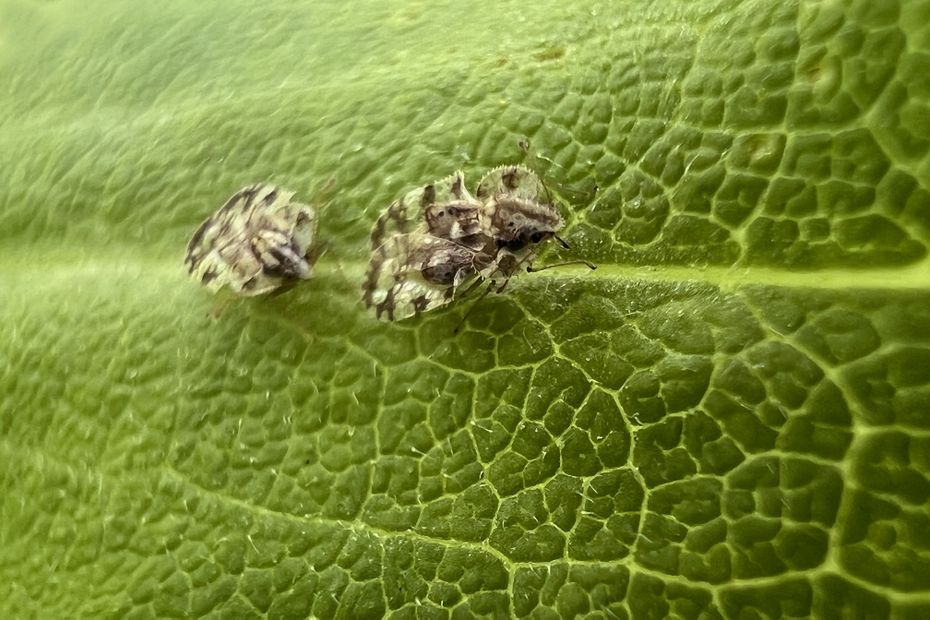The reticulated oak bug was observed for the first time in Burgundy-Franche-Comté, on numerous oak trees in the immediate vicinity of highways at the beginning of autumn 2024. Harmless to humans, the insect would not yet be a threat to trees in the region.
The essentials of the day: our exclusive selection
Every day, our editorial team reserves the best regional news for you. A selection just for you, to stay in touch with your regions.
France Télévisions uses your email address to send you the newsletter “The essentials of the day: our exclusive selection”. You can unsubscribe at any time via the link at the bottom of this newsletter. Our privacy policy
She’s tiny. It measures no more than 3 millimeters. And yet, it does not lack bite. The reticulated stink bug (Corythucha arcuata), also called the oak tiger, threatens our forests more than ever.
The nasty little beast was in fact observed for the first time in the region, at the beginning of autumn 2024, on numerous oak trees in the immediate vicinity of traffic routes, warns the Regional Directorate of Food and Agriculture and forest (DRAAF) of Burgundy-Franche-Comté.
“It’s very recent, confirms to France 3 Franche-Comté Bruno Guespin, observer correspondent for the Forest Health Directorate (DSF) in Jura. We found it mainly on motorway rest areas, because it is an insect that is carried by humans.”
Originally from North America, this exotic pest is in fact colonizing all of Europe. It was reported in northern Italy as early as 2000, then in southern Switzerland in 2002. It then spread to Turkey in 2003, Bulgaria in 2012, and Germany and Spain in 2021 .
The insect was detected for the first time in France in 2017 in the Toulouse region. Since then, its progression has been very rapid in the South-West and with the first cases recorded in 2023 in the Auvergne-Rhône-Alpes region. A year later, it is present in the departments of Côte-d’Or, Saône-et-Loire, Doubs and Jura. “But he remains on the edge of the forest for the moment”specifies Bruno Guespin. On the map provided by the DSF, it can be seen all along the A36 and the A39.
The oak tiger first appeared in Europe in 2000 in northern Italy. • © USGS Bee Inventory and Monitoring Lab from Beltsville, Maryland, USA
Despite its worrying nickname, the oak tiger does not yet constitute a real danger at the moment. But be careful, there is no question of taking the threat lightly. “It is a primary pest that attacks healthy treesé, explains Mathieu Mirabel, the regional manager of the Forest Health Department. It is an insect which produces several generations per year and which will quickly swarm.
We already know that it will spread throughout the chesnaies. It causes the leaves to turn white and will reduce the trees’ ability to phosynthesize. In what proportions? That’s the whole question.
Mathieu Mirabel, the regional manager of the Forest Health Department (DSF) of Burgundy-Franche-Comté.
“This is the problem of all exotic pests, adds Mathieu Mirabel. When they arrive in a new ecosystem, there is always a destabilization of the environment and we have to see what the impact is in the short, medium and long term.” Vigilance is therefore required even if the reticulated bug remains much less voracious than the caterpillars, capable of devouring entire foliage.
We know the plane tree tiger which comes from Asia and which resembles it. It is a defoliator but does not cause major health problems for trees. But we’re waiting to see.
Bruno Guespin, ONF, correspondent-observer for the Forest Health Department (DSF) in Jura.
The appearance of this bug in the region is, however, not good news for forest stands already affected by powdery mildew, caterpillars, drought and heat waves. “It’s an additional factor, recognizes Bruno Guespin. And it’s the accumulation that can tip the scales.“
“We will follow the dynamics of the populations”, assures Mathieu Mirabel. He emphasizes that studies have been launched by INRAE in Bordeaux to assess the consequences of this proliferation of reticulated bedbugs on the growth and vitality of oaks.


